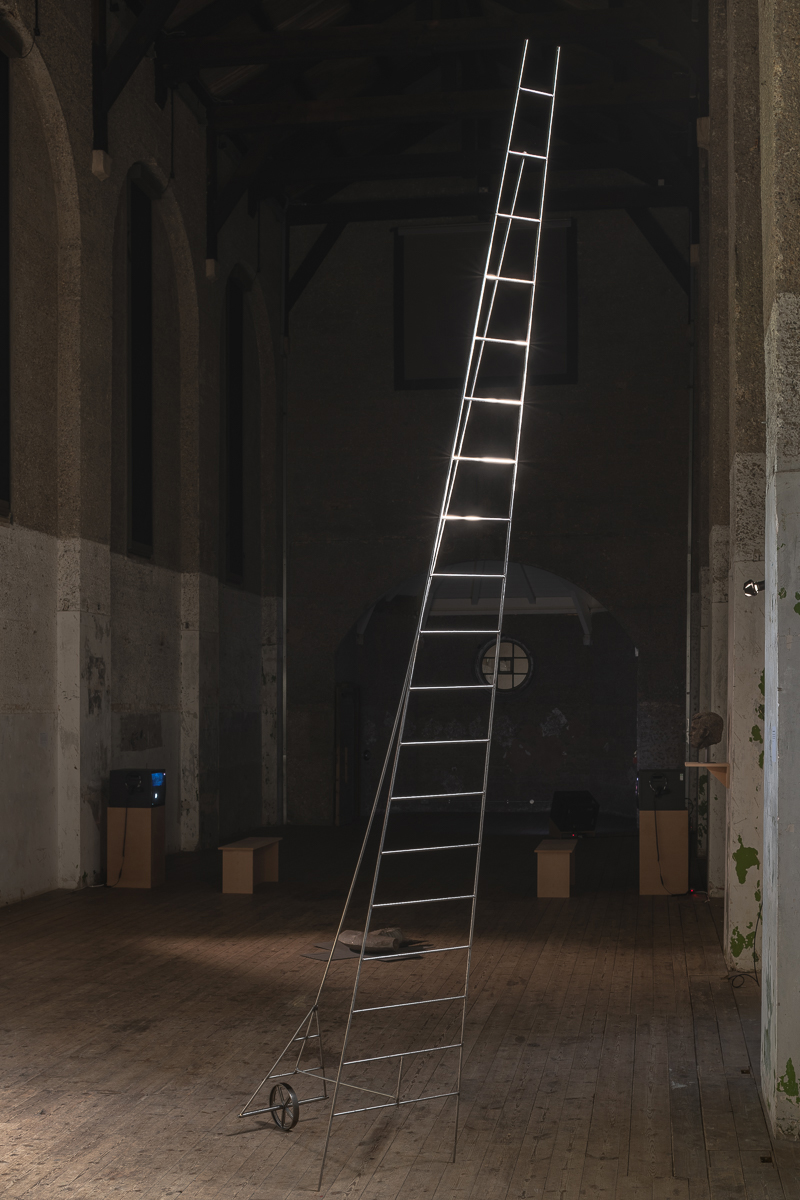The Overlooked Legacy of Sandra Drew
From her kitchen table in Canterbury, the Australian curator quietly reinvented the exhibition format
From her kitchen table in Canterbury, the Australian curator quietly reinvented the exhibition format

‘Reaching into the sky, tethered to the ground, it said everything I wanted to say,’ wrote Maryrose Sinn in 2018, reflecting on her 60-feet sculpture, Ladder (1986). ‘It remains a symbol of dreams, aspirations and possibilities. It defined my belief in sculpture, in women and in the future.’ Sinn’s Ladder was commissioned by the Australian curator Sandra Drew as part of ‘Third Generation: Women Sculptors Today’ – a large-scale exhibition of work by 22 artists that sprawled across the town of Canterbury in 1986, utilizing empty shop-fronts, school lawns, a church crypt, graveyards, the market square and theatres. While this type of public commissioning might be de rigueur today, in the 1980s, Drew’s initiative and interest in site-specific and time-based practice (combined with her distinctive ability to nurture both female and emerging artists, some who went on to find fame, others who left the art world completely) was prescient. ‘From The Kitchen Table: Drew Gallery Projects 1984–90’, at Southwark Park Galleries, seeks to represent the breadth and significance of Drew’s legacy, and to reposition her work as an intrinsic part of contemporary British art history.

In the entrance to the Dilston Gallery, there is a useful timeline of Drew’s exhibitions, alongside a rolling projection of photographic slides and vitrines filled with flyers, posters, newspaper clippings and letters. We see the erection of Ladder; Sharon Kivland and Bruce Gilchrist engaged in a performance at Safeways supermarket (Special Offers, 1985); Julia Wood working outdoors on her plasticine installation Going On in 1986; David Mach’s matchstick sculptures Fire-Works (1985); Wendy Howard welding large sculptures in the shape of corsets out of scrap car parts on the street in 1989; Phyllida Barlow’s Threat (1986), a sinister installation made from a mass of black polythene and layers of bitumen-blackened paper; Tina Keane’s The Media Snake (1985), comprised of multiple entangled video monitors installed across a derelict shop floor. Not only do the exhibition’s images and archival ephemera document performances and installations, they lay bare another history: generous council funding, land owned by the public rather than developers, an authentic engagement from local business as opposed to large corporations, and the nurturing of guerrilla and fringe activities. Drew’s handwritten directory of artists – a large sheet of paper that was pinned to the back of her kitchen door – is also on show.

The work still feels fresh, relevant. Bonita Ely’s ‘snabbits’ – surreal rabbit-snail hybrids that propose a genetically engineered solution to worldwide hunger, from her 1989 installation We Live to Be Surprised – feel disturbingly relevant in the midst of our current ecological collapse. Video works made by Marion Urch and Katharine Meynell resonate particularly when thinking about contemporary art’s turn to durational moving-image practices and sustained engagement with questions of gendered embodiment. In Out of the Ashes (1986), Urch converged Pagan and Christian mythology to explore taboos around menstruation, which she connected to the historical persecution of witches. Meynell’s multi-screen Hannah’s Song (1986) signifies questions of motherhood, authorship and the slippages induced by postpartum identity.

At the Lake Gallery space, Judith Ahern’s photographic series ‘Social Functions’ (1989) depicts her experience of accompanying an event photographer capturing couples at parties in both London and Sydney – the British couple appearing painfully drab and conservative in comparison to their glossy Australian counterparts. There is Rose Finn-Kelcey’s photographic work Untitled: Bullfighter (1986), made notable by gracing the cover of Performance Magazine that year. Perhaps the most revealing work of all, however, is Maeve Woods’s scintillating, kaleidoscopic video Glints (2008). Exhibited in lieu of her 1989 film installation Flashing Flesh and Bones, which was too deteriorated to show, Glints encapsulates how these artists’ formative experiences of collaborating with Drew continued to permeate their work throughout their careers. In the words of Sinn: ‘It made me think anything is possible.’
‘From the Kitchen Table: Drew Gallery Projects 1984–90’ runs at Southwark Park Galleries, London, until 30 June 2019.
Main image: Julia Wood, Going On (detail), 1985. Courtesy: the artist; photograph: Mike Lewis © UCA Canterbury
























